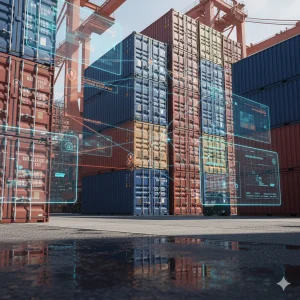Trade-based money laundering (TBML) exploits the global trade system to disguise illicit proceeds as legitimate commerce.
By manipulating pricing, quantities, or documentation across borders, criminals move vast sums, often billions, below the radar of traditional financial controls.
Recent estimates suggest TBML accounts for 2 to 5 percent of global money laundering, equating to hundreds of billions of dollars annually, and the gap between declared exports and imports reached an estimated $8.7 trillion from 2008 to 2017.
For multinational compliance teams, detecting TBML demands specialized red-flag indicators, robust data integration, and coordinated efforts across trade finance, compliance, and analytics functions.
Common TBML Techniques
Understanding the primary typologies helps teams anticipate vulnerabilities:
Over & Under-Invoicing
- Criminals overstate import values or understate export values to move excess funds across borders.
- Enables layering of illicit proceeds without raising pricing anomalies in standard banking monitoring.
Multiple Invoicing
- Issuing several invoices for one shipment—each at a different value—obscures the true value moved.
- Complicates reconciliation and audit trails for compliance systems.
Phantom Shipments / Fictitious Trades
- Fake cargoes with falsified bills of lading and shipping documents conceal fund transfers without any physical movement of goods.
- Relies on collusive front or shell companies for document fabrication.
Misclassification & False Descriptions
- Declaring high-value goods as low-value items (or vice versa) to mask the real transaction amounts.
- Common in precious metals, electronics, or dual-use goods, where market pricing is opaque.
Back-to-Back Letters of Credit
- Criminals exploit multiple, linked letters of credit to layer funds through different jurisdictions.
- Each intermediary bank sees only a fragment of the transaction, obscuring end-to-end visibility.
Key Red Flags Across Trade Activities
Multinational teams must monitor for indicators spanning corporate structures to transaction behaviors:
Unusual Trade Patterns
- Sudden shifts in trading partners, products, or high-volume transactions are inconsistent with historical business activity.
- Newly established entities are engaging in high-value trade immediately after formation.
Overlapping or Illogical Routes
- Shipments routed through multiple jurisdictions without a commercial reason, often to exploit weaker AML regimes.
- Goods are shipped to or from countries with minimal trade alignment to the parties’ real locations.
Inconsistent Document Data
- Discrepancies between contracts, invoices, and bills of lading, such as mismatched quantities, weights, or prices.
- Vague or generic commodity descriptions (“industrial parts,” “electronics”) lacking specific HS codes.
Trade-Finance Irregularities
- Extended or frequently rolled-over letters of credit without clear justification.
- Payments made by parties unconnected to the consignee or buyer signal possible shell-company intermediaries.
Transaction Account Anomalies
- “Pay-through” accounts that receive large deposits rapidly disburse funds to multiple unrelated accounts, then maintain minimal end-of-day balances.
- Frequent last-minute changes to payment instructions or beneficiaries.
Documentation & Commodity Risk Indicators
Thorough document examination and commodity profiling reveal deeper TBML signals:
Price Deviations
- Declared unit prices significantly above or below established market values, especially in sectors with transparent pricing benchmarks.
- Repeated low profit margins or margins inconsistent with industry norms.
Document Authenticity Issues
- Missing, altered, or counterfeit trade documents; frequent resubmissions of previously rejected paperwork.
- Contracts that mimic publicly available “template” agreements, lacking transaction-specific details.
Volume Mismatches
- Discrepancies between declared volume (e.g., weight, count) and payment flows in financial systems.
- Temporary import regimes exploited: goods imported duty-free, then re-exported under falsified declarations.
Structural & Account-Level Indicators
Beyond individual transactions, structural analysis uncovers network-level TBML activity:
Complex Ownership Structures
- Entities with multi-tiered shell or front-company arrangements, registered in high-risk or opaque jurisdictions.
- Companies lacking a genuine commercial presence—no physical offices or minimal online footprint.
Account Velocity & Structuring
- Rapid spikes in transaction volumes followed by dormancy, signaling staging and distribution phases of laundering.
- Cash transactions or transfers just below reportable thresholds to evade detection.
Unrelated Third-Party Financing
- Sudden capital infusions or payments from unrelated or previously inactive third parties.
- Use of personal accounts of executives or employees to route trade-finance proceeds.
Best Practices for Multinational Compliance Teams
Combatting TBML requires a holistic, risk-based strategy integrating trade, finance, and technology:
Cross-Functional Data Integration
- Consolidate trade-finance data, customs declarations, shipment manifests, and banking transactions into a unified AML analytics platform.
- Link trade routes, counterparties, and financing instruments for end-to-end visibility.
Advanced Analytics & AI
- Deploy machine-learning models trained on known TBML typologies to flag anomalies in real time.
- Use network-analysis tools to map relationships among entities, banks, and trade flows.
Enhanced Due Diligence (EDD)
- Conduct deeper background checks on high-risk trade counterparties, including beneficial ownership structures and operational footprints.
- Validate commodity pricing against independent market data sources.
Collaborative Intelligence Sharing
- Participate in industry groups, customs-bank partnerships, and law-enforcement exchanges (e.g., FATF, Egmont Group) to share emerging typologies and red-flag indicators.
- Leverage public-private partnerships to pilot new detection methodologies.
Continuous Training & Scenarios
- Offer scenario-based training for trade-finance, compliance, and relationship-management teams on TBML techniques and red flags.
- Update training modules regularly with recent case studies and regional trends.
How IDYC360 Helps
IDYC360’s unified AML/CFT platform equips multinational teams with the tools to detect, investigate, and disrupt TBML schemes effectively:
Unified Trade-Finance & Transaction Monitoring
- Integrates customs and shipment data with transaction flows, revealing hidden TBML patterns.
- Real-time alerting on mispricing, document anomalies, and suspicious trade routes.
Network & Ownership Analytics
- Visual link analysis uncovers shell-company networks and complex ownership structures.
- Identifies synthetic relationships among counterparties, banks, and intermediaries.
AI-Enhanced Risk Scoring
- Machine-learning models adapt to evolving TBML typologies, minimizing false positives while uncovering sophisticated schemes.
- Dynamic risk scoring for entities, trade lanes, and commodities based on configurable thresholds.
Automated EDD and Screening
- Instant beneficial-ownership resolution, sanctions, and PEP screening at onboarding and during ongoing monitoring.
- Validates counterparties against global watchlists and adverse media sources.
Compliance Reporting & Audit Trails
- Pre-built, regulator-ready reports for suspicious transaction reporting and trade-finance examinations.
- Immutable logs of alerts, investigations, and remediation actions for audit readiness.
Final Thoughts
Trade-based money laundering poses a formidable challenge, hiding in the complexity and volume of global trade.
By recognizing key red flags, integrating data across functions, and leveraging advanced analytics, multinational compliance teams can unmask TBML schemes before they inflict financial or reputational harm.
Proactive collaboration, continuous learning, and technology-driven oversight transform TBML from an opaque threat into a manageable compliance domain.
Ready to Stay
Compliant—Without Slowing Down?
Move at crypto speed without losing sight of your regulatory obligations.
With IDYC360, you can scale securely, onboard instantly, and monitor risk in real time—without the friction.











